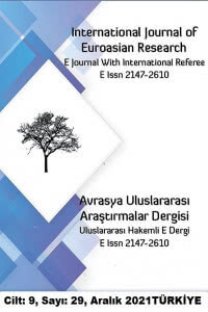KOREA AS PART OF THE MONGOLIAN WORLD:PATTERNS AND DIFFERENCES
___
- BROSE Michael C., (2013) “Uyghur Semuren in Koryǒ and Chosǒn Korean Society and Politics”, in M. Rossabi, ed., Eurasian Influences on Yuan China, Singapore, Institute of Southeast Asian Studies, 178-199.
- BUELL Paul D, (1977) “Tribe, Qan and Ulus in Early Mongol China: Some Prolegomena to Yüan History”, unpublished doctoral dissertation, University of Washington,
- BUELL Paul D, (1993) “Saiyid Ajall”, in Igor de Rachewiltz, Chan Hok-lam, Hsiao Ch'ich'ing and Peter W. Geier, editors, In the Service of the Khan, Eminent Personalities of the Early Mongol-Yuan Period (1200-1300), Otto Harrassowitz, Wiesbaden, 466-479.
- BUELL Paul D, (1994) “Chinqai (1169-1252): Architect of Mongolian Empire”, in Opuscula Altaica, Essays Presented in Honor of Henry Schwarz, edited by Edward H. Kaplan, and Donald W. Whisenhunt, Center for East Asian Studies (Studies on East Asia, 19), Bellingham, Washington, 168-186
- BUELL Paul D, (2016) “The Ethos of Sate and Society in the Early Mongol Empire: Chingiz Khan to Güyük”, with Judy Kolbas, in Timothy May, ed., The Mongols and Post-Mongol Asia: Studies in Honour of David O. Morgan, Journal of the Royal Asiatic Society, 26, 1-2 (January, 2016), 43-64.
- BUELL Paul D,(2003) Historical Dictionary of the Mongolian World Empire (Lanham, Md., and Oxford, 293.
- DUNCAN John, (2000) The Origins of the Choson Dynasty, Seattle: University of Washington Press, and John Duncan, “The Social Background to the Founding of the Choson Dynasty: Change or Continuity,” Journal of Korean Studies 6 (1988-89), 39-79.
- HABOUSH Jahun Kim, (2009) Epistolary Korea, Letters in the Communicative Space of the Chosen, 1392-1910, New York: Columbia University Press, 42-49.
- HENTHORN William E, (1963) Korea the Mongol Invasions, Leiden, E.J. Brill,
- HYUNHEE Park, (2012) Mapping the Chinese and Islamic Worlds, Cross-Cultural Exhange in Pre-modern Asia, Cambridge: Cambridge University Press,
- HYUNHEE Park, (2013) “Cross-cultural Exchange and Cartographic Knowledge of the World in Yuan China”, in M. Rossabi, ed. Eurasian Influences on Yuan China, Singapore, Institute of Southeast Asian Studies, 125-158.
- LİGETİ Louis, (1971) Histoire Secrète des Mongols, Monumenta Linguae Mongolicae collecta, I, Akadémiai Kiadó, Budapest,
- RECK Karl-Heinz, (1968) “Korea und die Mongolen”, Das Verhältnis von Bodenbauern und Viehzüchtern in historischer Sicht, Berlin, 135-144
- ROBİNSON David. M.,(2009) Empire’s Twilight, Northeast Asia under the Mongols, Cambridge and London: Harvard University Press,
- ISSN: 2147-2610
- Yayın Aralığı: 4
- Başlangıç: 2012
- Yayıncı: Kürşat Öncül
TWO INNER ASIAN RIVER NAMES IN TERKH INSCRIPTION
CHOSON HANEDANLIĞI’NDA KORE KAYNAKLARINDA MOĞOL DİLİ ÜZERİNE YAPILAN ÇALIŞMALAR
GOBI BÖLGESİNDE ARKEOLOJİK ARAŞTIRMA VE KAZI (Ganzagad Bölgesinde Arkeolojik Anıtlar)
OTLAKTAKİ GELENEK VE REFORMLA İLGİLİ KONULAR
Tseden TSETSEGJARGAL, Sakhiya BOLORMAA
ARAP HARFLİ MOĞOLCA SÖZLÜKLERDE MEYVE ADLARI
SOSYAL MEDYANIN KULLANIM AMAÇLARI: ÜNİVERSİTE ÇALIŞANLARI ÖRNEĞİ
Buket BULUK, Bekir EŞİTTİ, Mustafa BOZ
CULT OF ALAN-GHO’A AND THE UNIQUE POSITION OF WOMEN IN THE CHINGGISID DYNASTIES
ÜÇ ÜLKEYE BÖLÜNMÜŞ ÇOK DİLLİ BİR HALK: HAMNİGANLAR VE DİL DURUMLARI
SOME ISSUES OF IMPROVING THE QUALITY OF THE LABOR RESOURCES IN THE REPUBLIC OF KAZAKHSTAN
